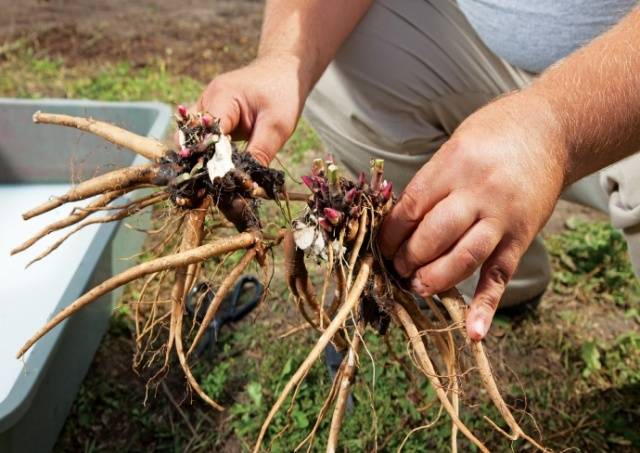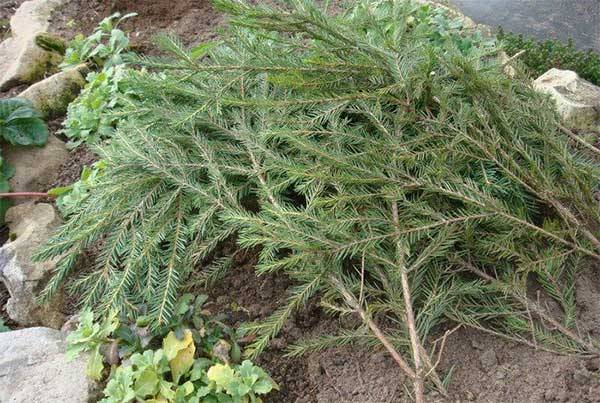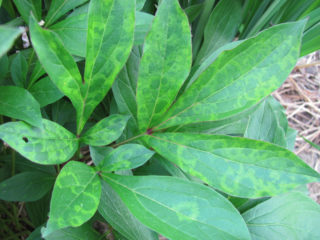Content
Peonies are perhaps the most popular flowers. And many gardeners prefer to grow them not only because they are easy to care for and do not require special attention. Their main advantage is a large number of beautiful, bright and large buds during flowering. Without replanting, a peony bush can grow in one place for up to ten to fifteen years. But despite their unpretentiousness, they, like many flowers, sometimes ask to be taken care of. But at the same time, compared to other flowers, caring for peonies in the fall is not so burdensome. By devoting just a couple of hours to your favorite flowers, you will know with 100% confidence that when the summer days arrive, they will thank you with lush buds and a delicate aroma.
Why spend time on peonies in the fall?
In spring and summer, peonies do not require such close attention. Throughout the season, they only need timely weeding and watering. But since these flowers bloom magnificently and for a long time, by autumn their roots are very weakened. Over the entire season, they gave the plants a lot of nutrients. Therefore, in the autumn it is advisable to feed them and help them prepare for winter. Caring for peonies in the fall includes only four types of work:
- Feeding;
- Transplantation in case of urgent need;
- Trimming;
- Mulching.
This plant will not require more from you.
Feeding peonies in autumn
If peonies bloom magnificently every year, then a logical question arises: why, in general, feed them? It would seem that the bushes have faded and do not require special care until spring. In fact, this is far from the case. Having devoted all their efforts in the spring to the active growth of green mass and bright buds during the flowering period, by autumn their root system is very weakened. And during this period, the formation of new roots and the preparation of the plant for winter begins. Feeding peonies in the fall is simply necessary so that they can receive the maximum possible amount of nutrients. The root system of these garden flowers is arranged in a special way. In a certain part, the roots are thickest and fleshiest. It is in these areas of the root system that all minerals and nutrients accumulate in the fall. During the period when active growth of the above-ground part of the plant begins in the spring, the roots give all the accumulated “vitamins” to the growing bushes and large buds.
Experienced gardeners advise feeding peonies in the fall from mid-September to the second ten days of October. But taking into account the characteristics of a particular region, one more important factor must be taken into account when determining the optimal timing for feeding peonies - the approaching frost.
Feeding peonies in the autumn has its advantages:
- In early spring, the buds will be much larger and stronger. Their number will also pleasantly surprise you.
- For timely feeding, peony bushes will thank you with more lush and bright buds.
- After feeding, peonies grow faster and the bushes quickly increase in size.
How, when and what to feed peonies in the fall so that you can admire the bright and unique flowers in the summer? At this time, phosphorus-potassium fertilizers will be useful for them. It is better to leave nitrogen-containing fertilizers until spring, as they stimulate rapid growth of the above-ground part of the plant. But in the fall this is undesirable. The shoots will freeze at the first frost.
There are two ways to feed peonies in autumn: dry and liquid. Each method has its own advantages.
Dry feeding of peonies
Peonies are most often fertilized using the dry method in particularly rainy weather. The liquid method is not suitable in this case because the roots have already absorbed enough moisture during the rainy season. They will absorb a minimal amount of fertilizer. For the dry method, it is best to purchase fertilizer in the form of granules. This way, it will be easier for you to control their quantity and more convenient to add to the soil. Such fertilizers last much longer than their liquid counterparts. The plant receives all the beneficial substances in small portions, that is, dosed.
Scatter a small handful of granules evenly around the peony bush. To prevent them from being washed away with the first rain, lightly loosen the soil under the plant, as if mixing the soil with fertilizer.
Liquid feeding of peonies
Liquid feeding of peonies in the fall is ideal if there is very little rainfall and the soil under the bushes is dry. In this case, granules containing mineral and organic substances are not suitable. It is better to use fertilizer in the form of tablets. Optimal dosage: 1 tablet per bucket of water. The life-giving cocktail must be mixed very well.Water your peonies with the resulting solution at the rate of 1 liter of liquid per bush. If the bushes are very large, then the dose can be increased.
Replanting peonies in autumn
Peonies are perennial flowers that can grow in one place for up to 10-15 years. This is true. But considering that over such a long period the land on which they grow becomes scarce, and old roots can cause diseases of young and fragile roots, it is still worth replanting them at least once every 5-6 years. Thus, you will not only rejuvenate the peony bushes and enrich the soil, but also provide your favorite garden flowers with more luxuriant blooms.
Peonies should be planted in early autumn. In Siberian regions with a harsh climate, this process should be postponed to the third ten days of August. In this case, the plants will grow well, and the root system of peonies will have time to absorb all the substances necessary for growth and development by winter.
Planting work is best done in warm, dry weather. But the soil in which the flowers grow must be moist. This will greatly facilitate the digging process, and you will not damage the young roots. If the soil is dry, water the peonies generously 1-2 days before replanting.
You need to dig up old bushes carefully, trying not to damage the buds and shoots. Carefully shake off any remaining soil and rinse with water. Carefully inspect the rhizomes for rot and disease. Separate old, hard, damaged and outdated roots from young ones. Place young roots in a light pink solution of potassium permanganate (potassium permanganate) for 30-40 minutes.And outdated rhizomes should be immediately removed from the site.
After treatment, plant the separated roots in the prepared soil. It is not recommended to plant peonies in their old place. It is better to find them another site. Keep in mind that the new place should be sufficiently lit - peonies are very critical to the lack of sunlight, which immediately affects flowering. Strong and piercing winds are undesirable for garden flowers. It is advisable to take care of preparing the soil in advance: about 3-4 weeks before planting, loosen it well and fertilize the area with superphosphate. Nitrogen fertilizers should not be used during autumn replanting.
The planting hole for peonies needs to be dug quite spacious - at least 40-50 cm deep. It is very important that the roots are located freely in it. Place a pre-prepared mixture of compost and wood ash in a 3:1 ratio at the bottom. Now carefully, trying not to break the young shoots, place the roots in the hole. Keep in mind that the top bud should protrude slightly from the ground. But no more than 1-2 cm. Fill the hole with soil and water the transplanted peonies generously.
After transplanting, do not forget about your pets and, in the absence of precipitation, water at least 2-3 times a week. Peonies transplanted in the autumn do not need additional feeding.
You will learn the basic rules for transplanting and planting old peony bushes from the video:
Autumn pruning of peonies
After you have fed the plants, a mandatory annual procedure follows - pruning peonies. Under no circumstances should such an important process be postponed until the spring season.There are several important reasons for this:
- Wilted stems are difficult to prune in spring.
- When pruning peonies in the spring, you can easily damage the delicate buds that are about to emerge from the ground.
- Withered foliage is an excellent place for the accumulation and active reproduction of various pests.
There are no difficulties in autumn pruning of peonies. It is important to choose the perfect time. Peony bushes need to be trimmed approximately 1-2 weeks before the onset of frost. The plants themselves will tell you when you need to pick up a garden tool. When the foliage on the bushes takes on a reddish tint and subsequently falls to the ground, you can safely get to work. It is not recommended to cut off the leaves earlier, because photosynthesis occurs in them before frost. Moreover, early pruning can negatively affect the flowering of peonies next summer.
All withered foliage must be cut out flush with the soil surface. It is undesirable to go deeper into the ground, as you may touch the roots and buds. It’s also not worth leaving “stumps” that are too high when pruning in autumn. At the end of the process, all foliage must be removed from the site. Ideally, all cut tops should be burned to prevent the spread of disease.
If at the time of pruning the autumn turned out to be warm and there is no rainfall, after finishing the work, water your favorite flowers well.
The author of the video will tell you how and when to trim peonies:
How to properly cover peonies
Taking into account the peculiarities of the structure and vegetation of peony bushes, namely, the location of growth buds too close to the surface of the earth, they must be carefully prepared for winter.
The growth buds formed in the fall are located at a depth of only 3-7 cm. In regions where winters are especially harsh, plants need to be earthed up as frost approaches.
In addition, it is necessary to prepare covering material for peonies in advance. The ideal shelter would be:
- Lapnik;
- Sawdust;
- Dry leaves;
- Peat.
The mulch layer should be at least 15-20 cm. In this case, peonies will survive the frosty winter well and will be perfectly preserved.
Pay special attention to the amount of precipitation in winter. If the winter turns out to be stingy with snowfalls, don’t be lazy and throw a small drift of snow on your flower beds. This measure will protect your flowers from freezing.
Conclusion
No additional work is required to care for peonies in the fall. If all of the above conditions are met efficiently and on time, in the summer your flower beds will be strewn with bright buds, and their delicate aroma will give true pleasure.




















